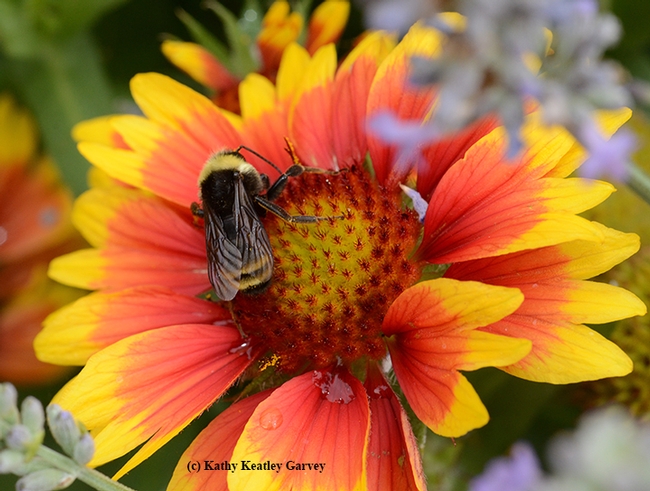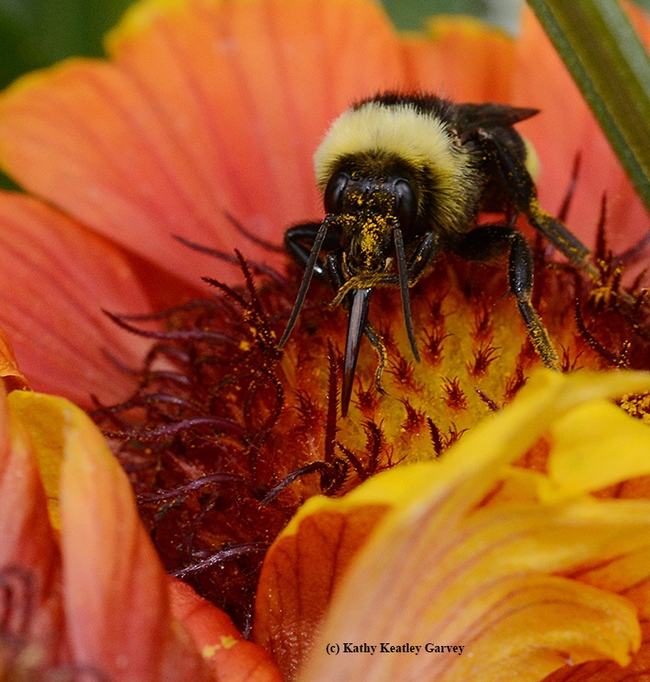We just met a male black-faced bumble bee, Bombus californicus.
It was early morning and he was resting on a blanket flower (Gaillardia), a brilliant member of the sunflower family. When you're a bee, a blanket flower offers both bed and breakfast.
Gaillardia was named after M. Gaillard de Charentonneau, an 18th-century French magistrate who was a patron of botany, according to Wikipedia. "The common name may refer to the resemblance of the inflorescence to the brightly patterned blankets made by Native Americans."
The bumble bee species, a native, takes its name from California. Unlike the yellow-faced bumble bee, Bombus vosnesenskii, its face is black and long. (Except when it's covered with golden pollen.)
Authors Kate Frey and Gretchen LeBuhn in their newly published book, The Bee Friendly Garden, note that unlike honey bees, bumble bees can fly in "cold rainy weather...They have several physiological adaptations that allow them to fly in bad weather, including the ability to shiver to raise their body temperature."
Frey, a world-class garden designer and LeBuhn, a bee expert and professor at San Francisco State University, offer advice on how to attract bumble bees and other pollinators to your garden. They quote native pollinator specialist Robbin Thorp, distinguished emeritus professor of entomology at the University of California, Davis, and the co-author of Bumble Bees of North America: And Identification Guide and California Bees and Blooms: A Guide for Gardeners.
What we know is this: it's good to have bed and breakfast for a bumble bee. Much of the bumble bee population is declining and we all need to do what we can to protect them and provide for them.
Attached Images:

Male black-faced bumble bee, Bombus californicus, resting on a blanket flower, Gaillardia. (Photo by Kathy Keatley Garvey)

Dorsal view of a male black-faced bumble bee, Bombus californicus, on a blanket flower, Gaillardia. (Photo by Kathy Keatley Garvey)

Male black-faced bumble bee, Bombus californicus, tastes the nectar from a blanket flower. (Photo by Kathy Keatley Garvey)